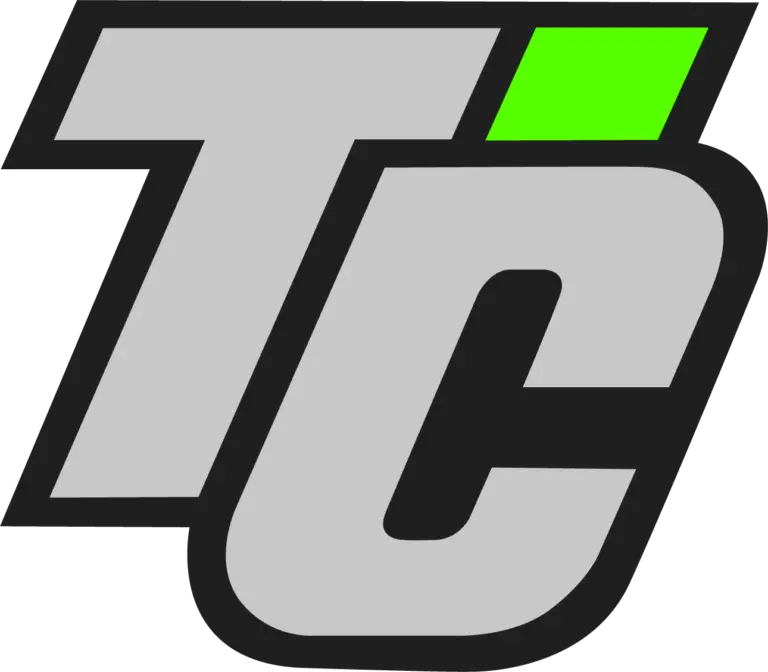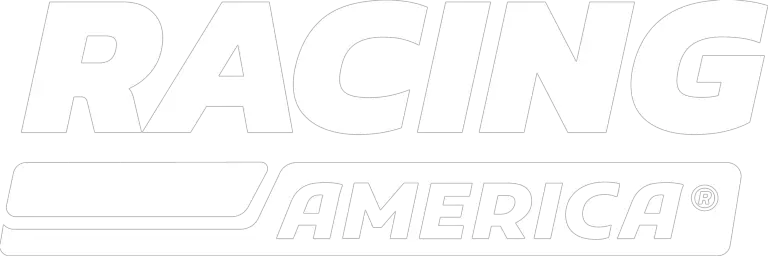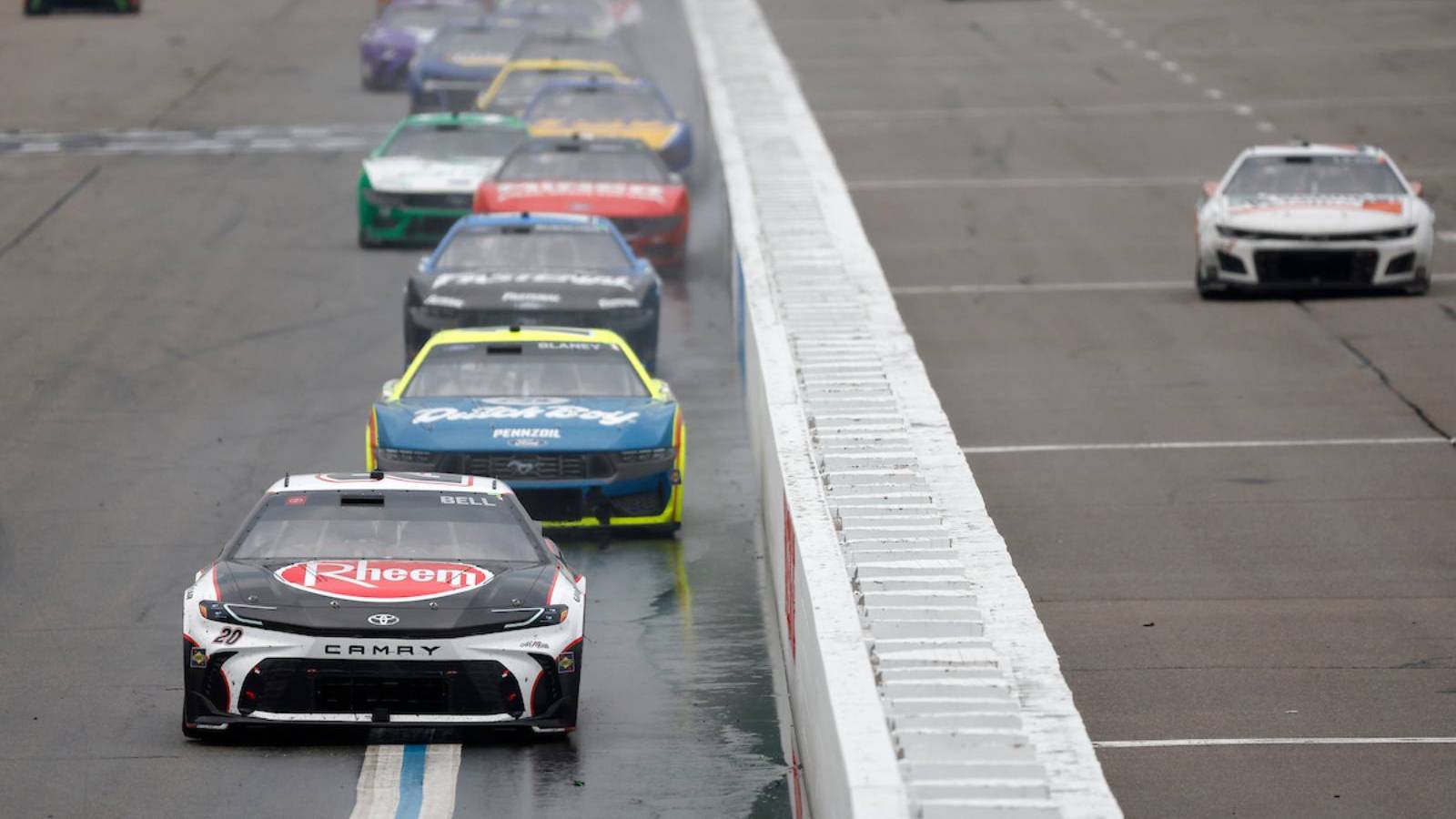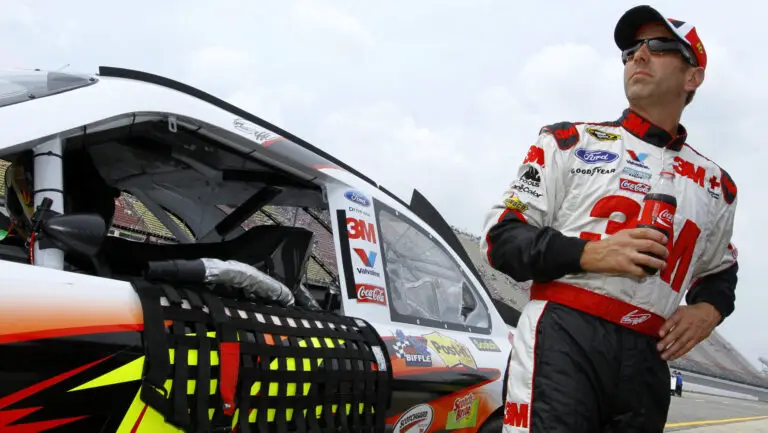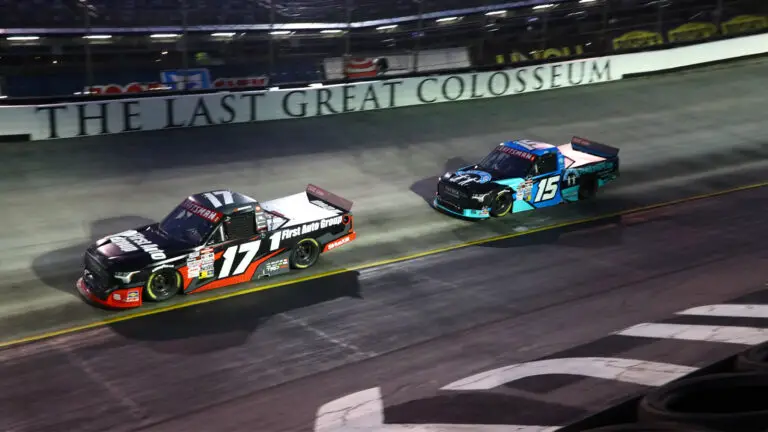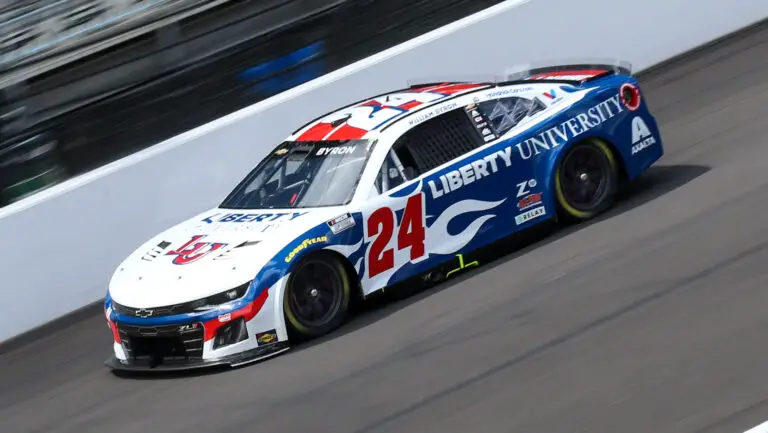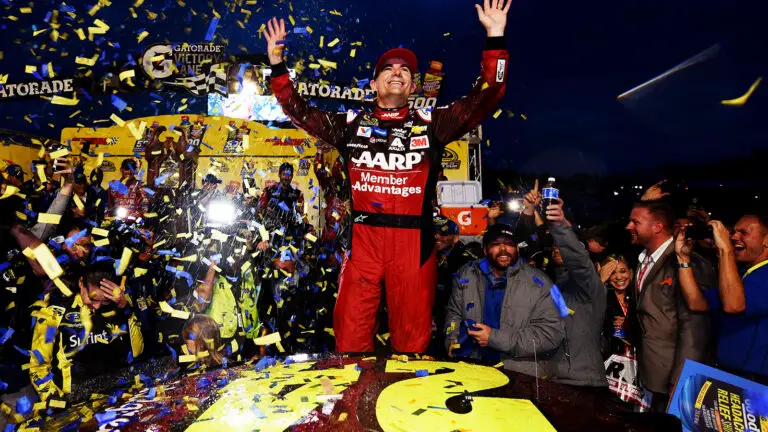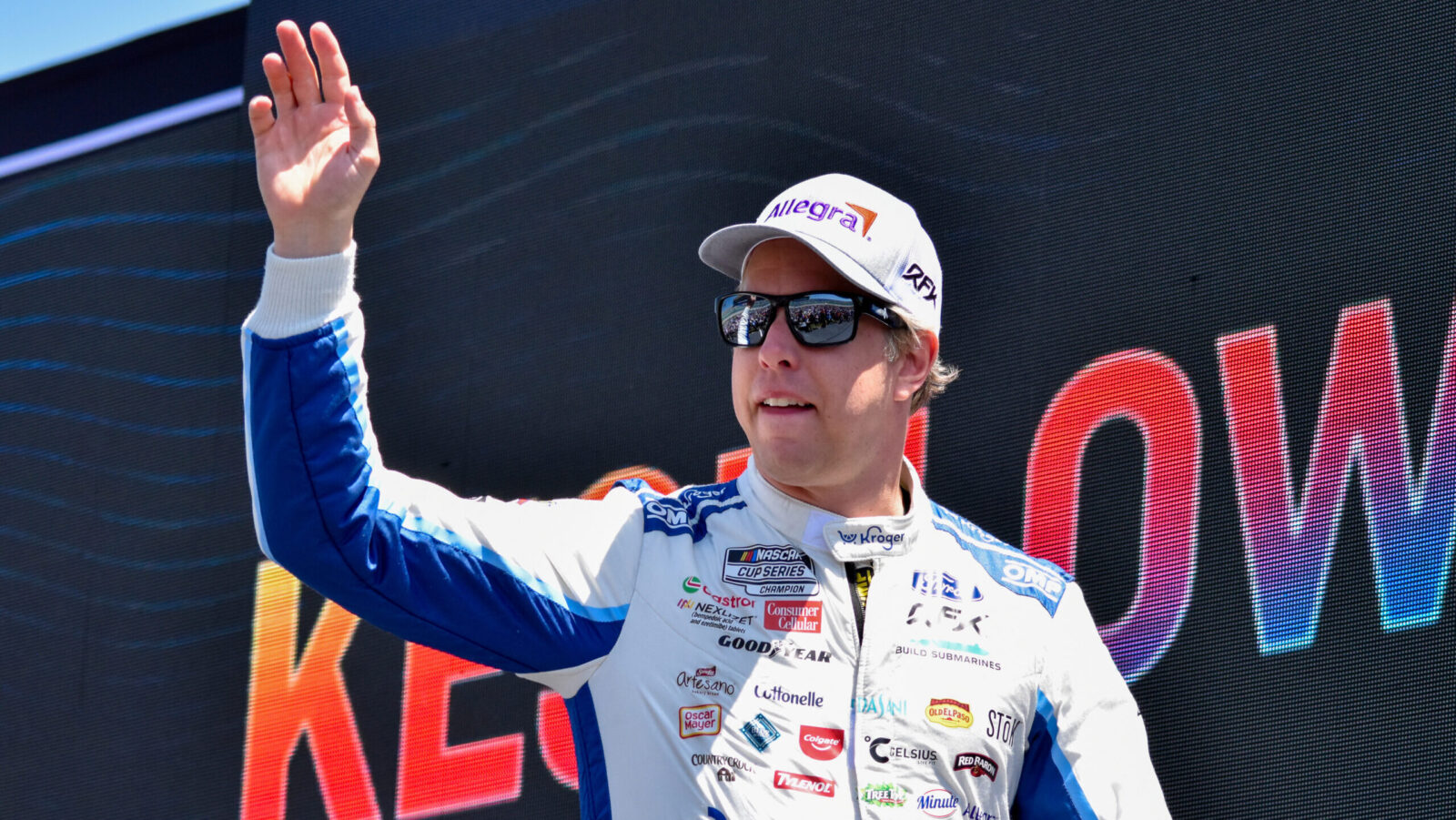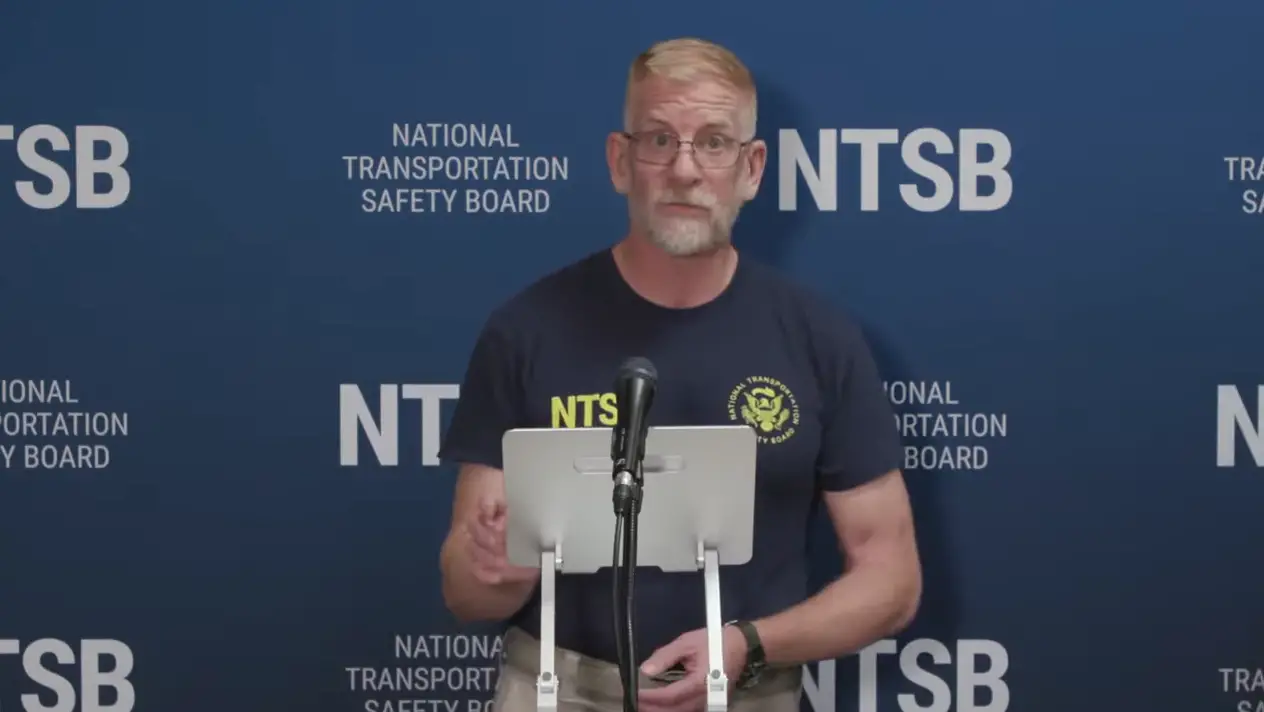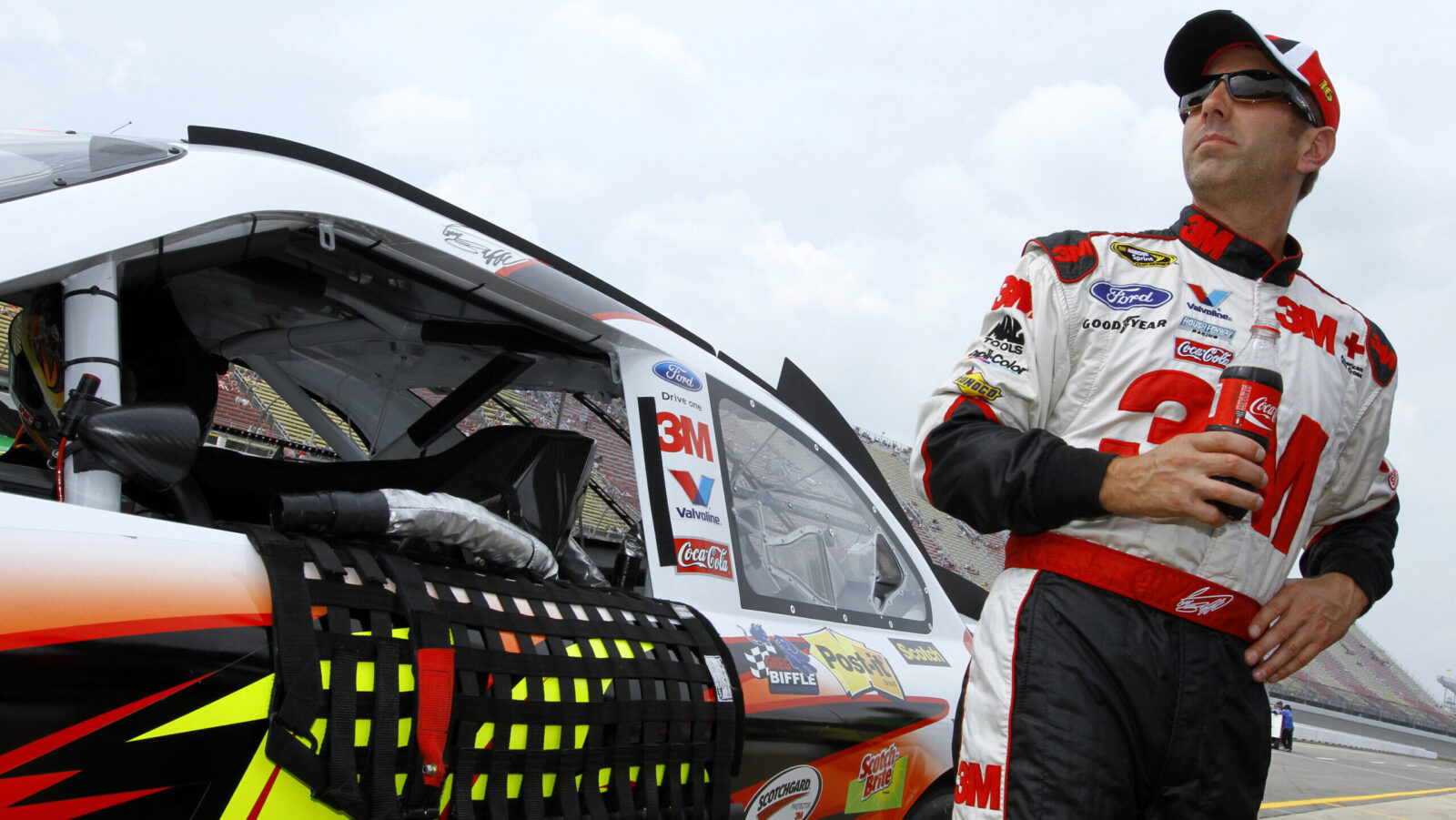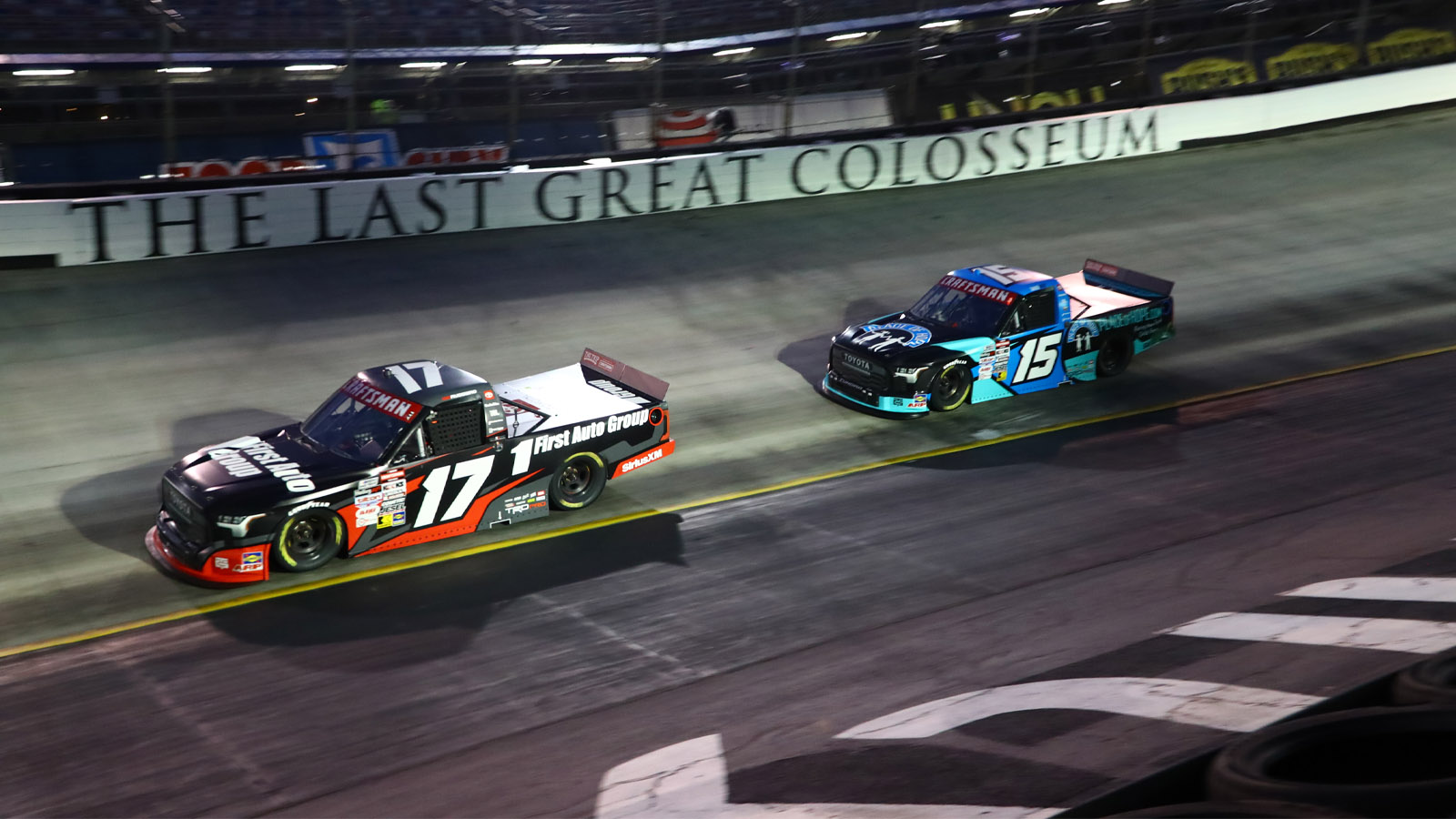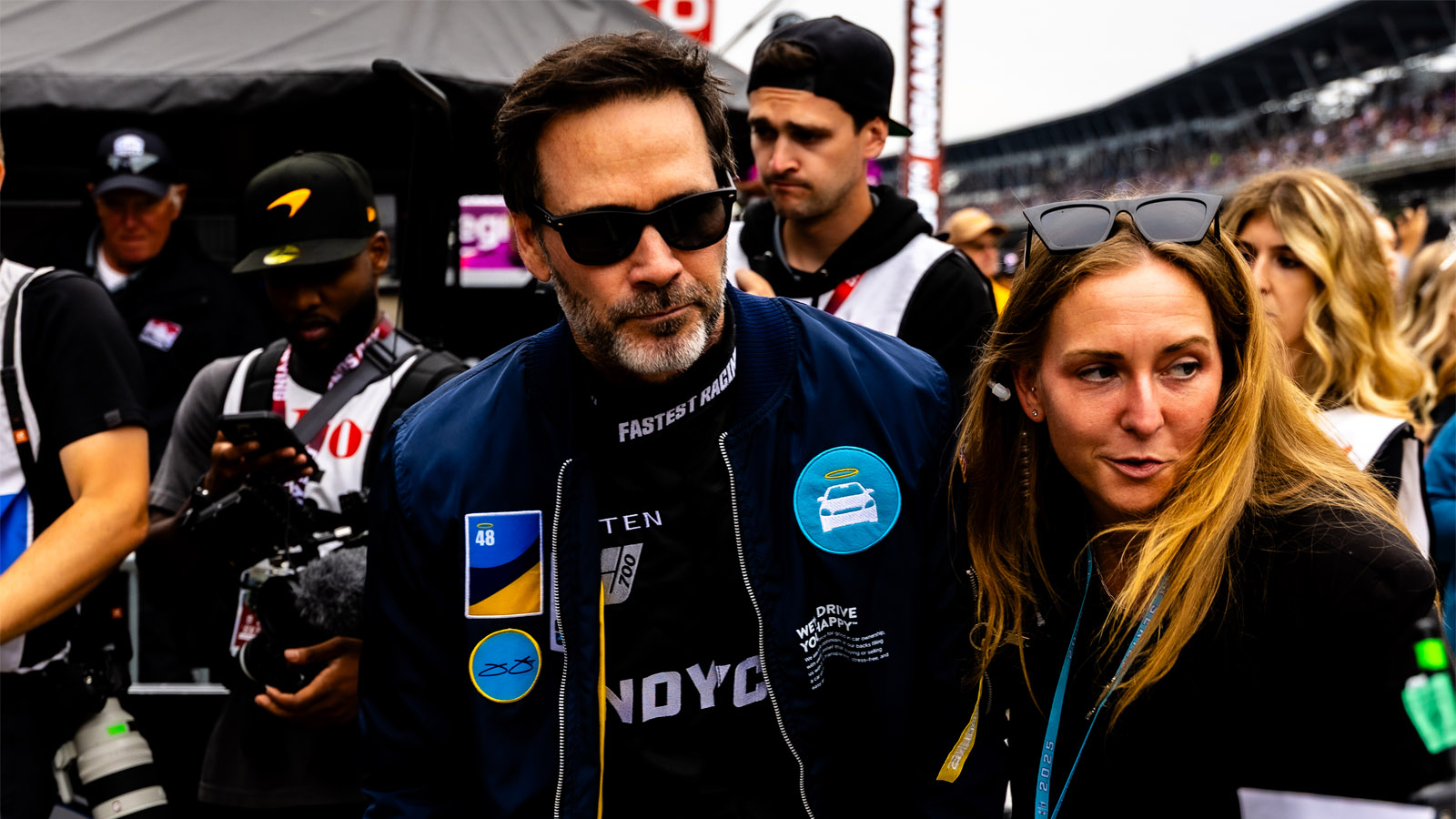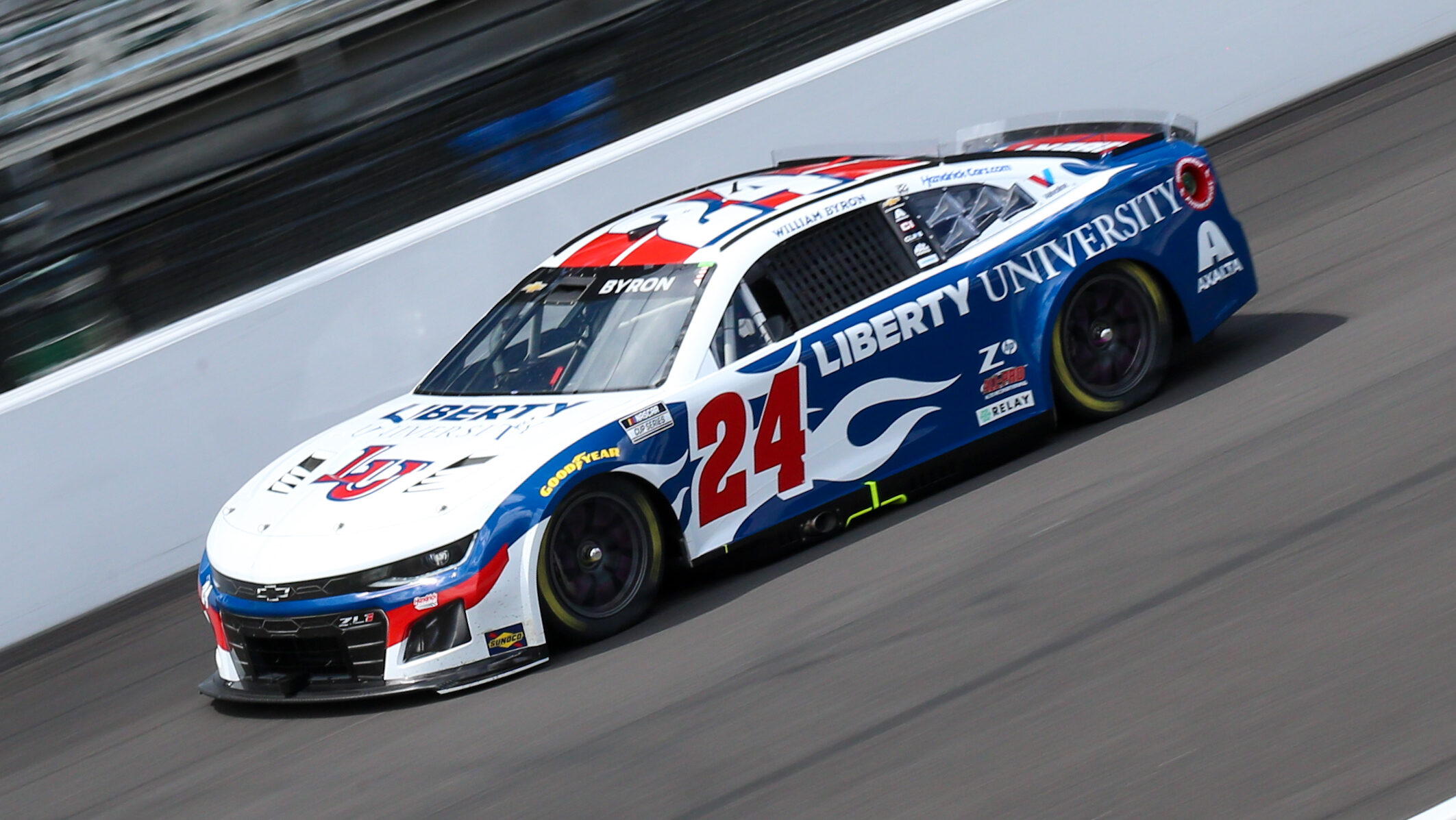By looking at the forecast in the days leading up to NASCAR’s annual trip to New Hampshire Motor Speedway, it was clear that NASCAR Cup and Xfinity Series teams were going to be locked in a weekend-long battle with Mother Nature.
NASCAR Xfinity Series practice and qualifying was canceled on Friday, NASCAR Cup Series qualifying was canceled on Saturday, and NASCAR’s attempt to allow Cup Series teams to have some form of on-track activity before the race? Stopped (after four minutes) by rain.
However, when it comes time to race, NASCAR permits the use of wet weather tires on short, flat racetracks, allowing the race to be started (or in the case of Sunday, resumed) while the track is still damp. They’re not untested, either, having debuted in the NASCAR All-Star Race at North Wilkesboro in 2023.
In previous use of the tires, including Saturday’s Xfinity Series event, teams had started the race on the wet weather tires, then taken them off and continued the race as planned once NASCAR believed the track was dry, throwing a competition caution.
This time, NASCAR encountered the dreaded weather system that had been approaching the 1.058-mile racetrack for much of the afternoon. Based on the severity of the weather, many concluded NASCAR would deem the race official after 219 laps and declare Tyler Reddick the winner. But the sanctioning body waited the storm out, dried the track some, and strapped on the wet weather tires.
From that point forward, we might as well have re-branded it into an entirely different race, because the first two-thirds of the event was pretty much meaningless and had very little bearing on what transpired during the race’s final 82 laps, all of which were run on wet weather tires.
The biggest benefactor of the wet, was Christopher Bell, driving from ninth to the race lead while on wet weather tires and collecting his third NASCAR Cup Series victory of the season, and his seventh win in 11 NASCAR National Series events at New Hampshire.
“Well, my chances [of winning] got a lot higher once they went to the wet weather tires,” Bell said in his post-race press conference. “We lost all of our track position in stage three with the strategies, the way they played out, all the yellow flags. Early on in the race I was good, and then Martin got by me, and I wasn’t out of it by any means, but then it was going to get a lot harder once we got mired back in traffic there at the start of stage three. Then whenever the wet weather came in, it really made it anybody’s ball game.”
When comparing race results to the running order during the rain delay, there is nobody who gained as many positions as John Hunter Nemechek did, driving from 31st, one lap down, to an eighth-place finish, just his second top-10 result of the year for LEGACY MOTOR CLUB.
Nemechek had a unique, and apparently effective, strategy to keep the good in his wet weather tires, driving through the grass on the backstretch road course while pacing under caution, and moistening up his Goodyear tires before firing off strong on the restarts.
Chase Briscoe (+21), Martin Truex, Jr. (+18), Josh Berry (+17), and Ricky Stenhouse, Jr. (+17) all managed to gain more than 15 positions in the 86-lap span from restarting the race and reaching the checkered flag in NASCAR Overtime.
“The rain saved us,” said Briscoe after the race. “Awesome recovery for our Zep Ford. I’ve always joked this is one of my worst racetracks, so to run second is kind of surprising, to be honest with you. But, yeah, the rain definitely helped us. If it wasn’t for the rain, we literally would’ve run 24th, probably. We were able to have a couple of good restarts. Our guys did a really good job just understanding the rain balance. I think we learned a lot when we did it at Richmond. We needed a good turnaround day. It definitely didn’t start that way, but I’m certainly glad that it ended that way.”
Briscoe and his Stewart-Haas Racing teammate Josh Berry had opposite starts to the afternoon, with the No. 4 Ford Mustang Dark Horse showing top-five pace from the get-go, but the result saw both drivers surging to the front of the pack as NASCAR mandated the running of wet weather tires for the final 86 laps.
“That was a lot of fun, honestly,” said Berry after finishing third. “I’m going to think back to a million different things I could’ve done differently there. But the bottom was so hard to get going through [turns] one and two. I felt like if I could just clear the No. 14, I was kind of inching in on [Christopher Bell] before the final caution and I just got a little loose off of two.”
In what could end up being his final NASCAR Cup Series start at New Hampshire, Martin Truex, Jr. finished a solid ninth place, picking up a ton of spots from where the No. 19 Toyota Camry XSE was positioned when the race resumed. The initial loss of track position, was a result of an incident just eight laps before the race was stopped due to rain.
“Definitely not,” said Truex when asked about whether he thought a top-10 was possible. “It was pouring rain, I thought we were headed home. Definitely a tough day. We had a speed in our Reser’s Camry. It is a shame the way things worked out, but happy to get a top-10. It has been a rough four weeks, so we needed a good finish. We had good stage points, and we needed a good finish, so glad that we got it, but it hurts to have a tough day here, probably being my last one.”
Coming home in seventh, Ricky Stenhouse picked up his second straight top-10 result for JTG Daugherty Racing, after earning a top-five at Iowa Speedway last weekend. Stenhouse’s afternoon was adventurous and even included some slight contact in a Lap 266 accident (while on the wet weather tires).
“Our day was all over the place,” said Stenhouse. “We were really bad on dry tires and just struggled all day. And then when we went to wet weather tires, we had really good runs. We struggled a little bit, but there at the end, we got our No. 47 really good. We were able to battle back from 25th and drive up into the top-10. We made the most out of it, which was really cool”
On the flip side of things, several drivers lost their footing during the final 86-lap stretch using the wet weather tires, losing out on the fantastic runs that they had built throughout the opening 219 laps of the event, up until the red flag was displayed for a thunderstorm that many thought would be race-ending.
There was one incident, late in the going, that completely ruined strong runs for both Justin Haley and Ryan Blaney – the two drivers in the field that lost the most positions between the rain delay and checkered flag – that occurred when Michael McDowell lunged into the first corner, spinning both himself and Blaney, and in the aftermath contacting Haley, in the No. 51.
Before the wet weather tires, Haley was on track to score the best non-superspeedway finish for Rick Ware Racing in the NASCAR Cup Series, and the second-best finish ever. The damage was severe though and cost him 24 positions in the closing laps. After losing all his track positions, Blaney was unable to rebound, finishing 25th, 23 spots below his position at the Lap 219 rain delay.
Denny Hamlin (-21), Bubba Wallace (-20), Noah Gragson (-17), Austin Dillon (-14), and Austin Cindric (-11) all lost more than 10 spots from the time the wet weather tires were put on, to the time the checkered flag was displayed.
Bubba Wallace, Noah Gragson, and Austin Dillon were all involved in a multi-car accident at Lap 266, which was triggered when Gragson, in the No. 10 Ford Mustang, got his left-side tires on the painted line, sending his Stewart-Haas entry for a spin in the first corner, handing out big damage to Wallace and Dillon.
“I just lacked grip,” said Gragson post-race. “Super loose all the way around the track. Must’ve hit the paint on entry to (turn) one, and not intentionally by any means with the 23 (Bubba Wallace). Just a mistake on my part. It was unfortunate and I apologize to the 23 guys for ruining their day. That’s obviously not what we want to do and not what I want to do. It was completely unintentional.”
The accident ended the afternoon early for Austin Dillon, which finished off a miserable day at the racetrack for Richard Childress Racing. Both Dillon and Kyle Busch lacked any semblance of speed, and eventually, both drivers were forced to retire from the event due to crash damage.
“Our luck is unreal on this No. 3 Chevrolet team this year,” said Dillon. “We started the race today with serious balance issues and difficulties going over the bumps at New Hampshire Motor Speedway. We finally get rolling, we were going to roll past two on the top, and the No. 10 car loses control and we have nowhere to go. Our Chevrolet was destroyed and it ended our day. It’s unfortunate because I felt like we had an opportunity to make up some ground and think outside the box on wet tires. We’ll rebound and head to Nashville Superspeedway next weekend.”
Busch specifically struggled for pace all afternoon, barely scratching the top-30 during the first two-thirds of the event. However, after two separate incidents, the No. 8 FICO Chevrolet had worked back onto the lead lap when the rain delay hit. Unfortunately, Busch didn’t get to run a lap under green using the wet weather tires, after crashing under caution and slamming into the Turn 4 wall.
“We worked our way back into the lead lap and thought we could pick up a few more spots but unfortunately, we hit the wall under caution on wets just before coming back to green after the rain delay and weren’t able to finish,” said Busch after climbing from his car. “We’ll take the FICO Chevy back to the shop to evaluate what happened and how we can improve on our New Hampshire package.”
For what it’s worth, Rookie of The Year (ROTY) contender Carson Hocevar, was the only driver in the NASCAR Cup Series field whose position during the Lap 219 rain delay, matched the position recorded at the finish, after running 85-plus laps on wet weather tires.
Yes, Sunday’s USA Today 301 presented NASCAR Cup Series teams with a unique scenario, in which the wet weather tires were strapped on to complete the event, so the volatile running order is understandable.
But, as these tires are used more frequently on the ovals, drivers and teams will likely get a better understanding of what is required to succeed, and hopefully, will be allowed to strategize with the allocation of the wet weather tires, and when to move back to slicks, creating an entirely new strategically element for when inclement weather arrives at the track.
